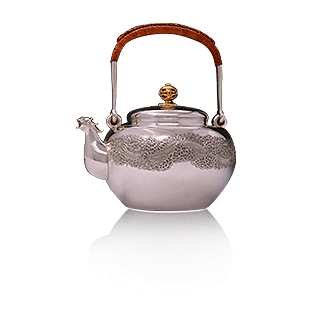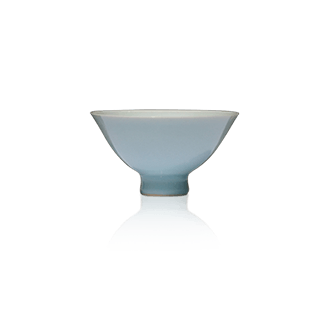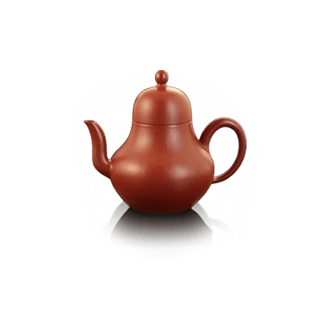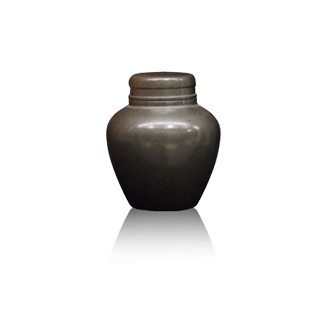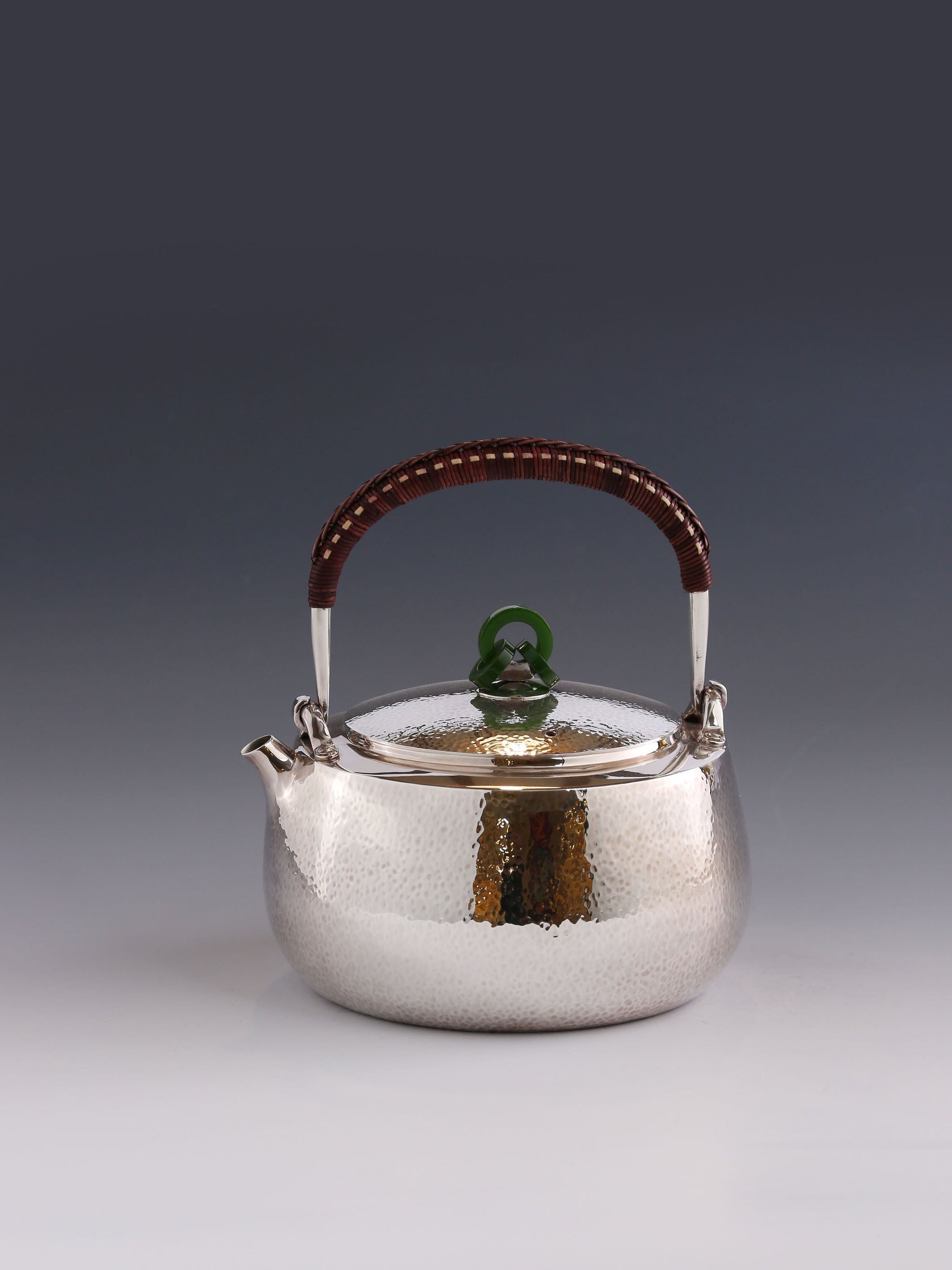


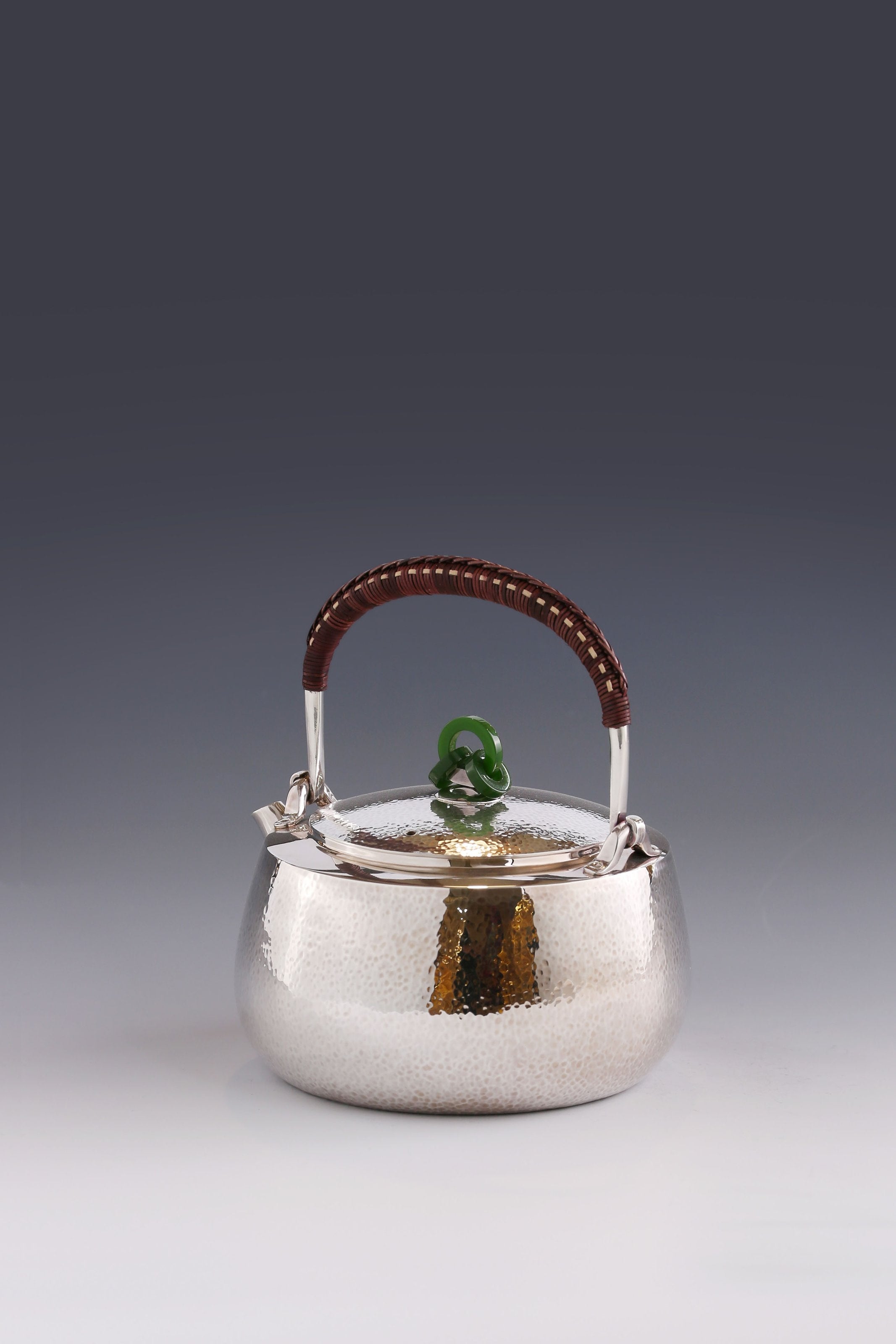
Kitamura Kissing I Jade Ring






Kitamura Kissing I Jade Ring
Kitamura Kissing I Jade Ring
Produced by Dayatang, made by intangible cultural heritage inheritor Hong Jike. Volume: Approx. 1000 ml. Weight: Approx. 600 g.
The design is extremely simple, with the spout formed from a single piece. It features a three-ringed jade handle, woven from old vine, and is forged with a hammer, resulting in a restrained and elegant style.
The teapot is made of 9999 sterling silver, handcrafted from a single piece of silver. This "one-piece" creation, except for the handle and lid, uses only one piece of gold and silver, without fusion; it's crafted solely through meticulous hammering, undergoing 40 quenchings and 150,000 hammerings – a difficult and complex process. The rounded parts of the teapot, in particular, require tens of thousands of hammerings to complete in one continuous motion. Although lacking intricate decorations, its simple and unadorned design, with its full shape and flowing lines, is pleasing to the eye, revealing a restrained beauty.
Shizuka Kitamura [1904-1976] was an important inheritor of Japanese intangible cultural heritage. Her works are characterized by their simplicity and elegance, with the body made from a single piece and the handle shaped like a bean pod.
Just as teapots created by Lu Siting are called "Siting teapots," teapots in the style of Gong Chun are respectfully named "Gong Chun" by later generations.
Due to Kitamura's status in the history of metalworking, works of this style are respectfully referred to as "Kitamura" pieces in the industry.
The exquisite craftsmanship of Chinese silverware is unprecedented, and its simple beauty and harmonious Eastern style are also admired by contemporary tea drinkers.
Produced by Dayatang, made by intangible cultural heritage inheritor Hong Jike. Volume: Approx. 1000 ml. Weight: Approx. 600 g.
The design is extremely simple, with the spout formed from a single piece. It features a three-ringed jade handle, woven from old vine, and is forged with a hammer, resulting in a restrained and elegant style.
The teapot is made of 9999 sterling silver, handcrafted from a single piece of silver. This "one-piece" creation, except for the handle and lid, uses only one piece of gold and silver, without fusion; it's crafted solely through meticulous hammering, undergoing 40 quenchings and 150,000 hammerings – a difficult and complex process. The rounded parts of the teapot, in particular, require tens of thousands of hammerings to complete in one continuous motion. Although lacking intricate decorations, its simple and unadorned design, with its full shape and flowing lines, is pleasing to the eye, revealing a restrained beauty.
Shizuka Kitamura [1904-1976] was an important inheritor of Japanese intangible cultural heritage. Her works are characterized by their simplicity and elegance, with the body made from a single piece and the handle shaped like a bean pod.
Just as teapots created by Lu Siting are called "Siting teapots," teapots in the style of Gong Chun are respectfully named "Gong Chun" by later generations.
Due to Kitamura's status in the history of metalworking, works of this style are respectfully referred to as "Kitamura" pieces in the industry.
The exquisite craftsmanship of Chinese silverware is unprecedented, and its simple beauty and harmonious Eastern style are also admired by contemporary tea drinkers.




Frequently asked questions
Use the FAQ section to answer your customers' most frequent questions.
Order
Yes, we ship all over the world. Shipping costs will apply, and will be added at checkout. We run discounts and promotions all year, so stay tuned for exclusive deals.
It depends on where you are. Orders processed here will take 5-7 business days to arrive. Overseas deliveries can take anywhere from 7-16 days. Delivery details will be provided in your confirmation email.
You can contact us through our contact page! We will be happy to assist you.





